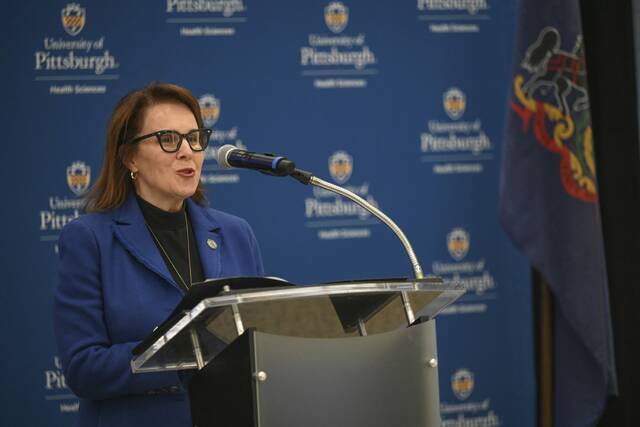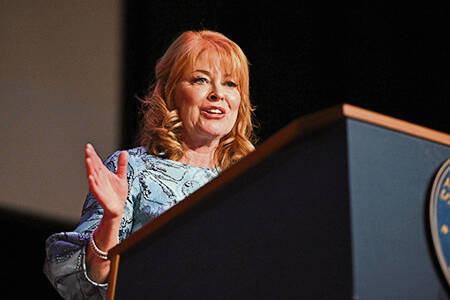As traditional cable television fades and online streaming services grow in popularity, users have a common burden: rising bills.
Data from the Bureau of Labor Statistics shows almost 30 straight years of consumers paying more for cable, satellite and — since they were introduced in the late 2000s — livestream television services.
Cable and satellite companies are locked in an extended losing battle with Netflix, Hulu, Amazon Prime and others, even as bundles of the different service types have proliferated, according to Alan Wolk, cofounder and lead analyst at industry research group TVREV.
“You read things about the massive wave of cord cutting,” he said. “It’s not really a massive wave. It’s a drip-drip.”
Either way, cable TV is “never going to gain,” he said.
That’s left traditional providers squeezing their revenue from a shrinking, disproportionately older customer base, while streaming companies are leveraging consumer preferences to hike subscription rates and pile on advertising.
All that has added up to what Wolk views as the final act of this great television upheaval, where cable and satellite television are becoming accessories to internet packages, much like landlines, rather than the main draw.
Only once the transformation is complete — in around 5 years, he predicted — will bills stabilize.
The business of pay television
Pay television providers get most of their programming from individual broadcasters and networks at a cost that is passed along to consumers — sometimes quite directly.
Most customers pay between $10 and $30 a month in retransmission fees for signals from broadcast stations, like CBS and Fox.
This appears as a discrete billing item, unlike the carriage fees demanded from networks.
Wolk said media giants like Disney and Paramount often package their stations as a take it or leave it offer to cable and satellite companies, driving up costs and leaving many viewers with unwanted channels.
The Cable Television Consumer Protection and Competition Act of 1992, meant to put downward pressure on prices, established this system that, ironically, has sent the cost of premium television through the roof.
Chip Lupo, a writer and analyst for personal finance firm WalletHub, recommends customers pull the classic move of calling their provider and presenting a cheaper rate from a competitor.
“The representative may counter with a discount on your current package, but don’t feel pressured to accept the initial offer, as it likely won’t be the best one they can give you,” he said. “Make sure you have a price ceiling in mind, too. Otherwise, you could end up accepting an offer that may not turn out to be a good deal.”
Reading the fine print of introductory and promotional deals can help, too.
Wolk added another piece of advice: Ask for the most basic package. These often aren’t advertised.
A stream of subscriptions
When Disney+ debuted its streaming service in the fall of 2019, it cost $6.99 per month, which seemed like a preposterously low amount for access to — for the most part — Disney’s entire entertainment portfolio.
According to streaming media analyst Dan Rayburn, “preposterous” isn’t a bad word to describe it.
“They brought it to the market at such a low price point, their entire model was, ‘We’ll lose money,’ and they did — they lost $14 billion since they’ve launched that service,” Rayburn said.
Rayburn and other streaming analysts said that far more than inflation, the upfront cost of licensing and producing content is the biggest driver in climbing subscription prices.
“What they and others realized after a few years is that this isn’t a profitable business, that Wall Street is going to continue to devalue the stock until they show they can turn a profit,” Rayburn said. “So Paramount, Fubo, Disney, pick who you want. The reason they’re raising prices is they have to show they’re profitable. Disney laid off 7,000 people last year. The reason they’re so focused on raising rates is they used to be giving it away.”
The basic Disney+ service costs $10 per month today, or $16 without ads, along with host of tiered options to add in things like ESPN programming.
Michael Smith, a professor of information technology and public policy at Carnegie Mellon University, said rising streaming-service prices are a function of normal inflation, increased competition, and consumers showing they’re willing to pay more.
Inflation Explained:
• From the Newsroom podcast: Explaining inflation
• With the TV industry in flux, customers see the uncertainty reflected in their bills
• Pandemic disruptions work their way out of the car industry
• Utility costs driven by war, climate change and regulatory incentives
• Housing costs driven by supply and demand
• As material, labor costs rise, so do insurance premiums
• Cheaper consumer electronics an outlier among industries
• Restaurants balance rising costs with consumer preferences
• A multitude of factors go into grocery prices
• It seems everything is more expensive than 5 years ago. Here’s why.
“There are costs associated with making content — you’ve got to pay the talent, the set staff, the writers, etc.,” Smith said. “So inflation can make its way in like that.”
Smith agreed with Rayburn that licensing has played a role in cost hikes, as newer services jockey for bankable syndicated content.
“When Netflix was the only game in town, Netflix had a pretty strong bargaining position to license other companies’ content,” he said. “As more platforms get into the game, there’s been more competition to license that content.”
Smith said streaming companies are also conducting a bit of an economic experiment: Testing the current cost ceiling.
“If I’m a streamer and I raise prices, I can see in real time how many people cancel their subscriptions,” Smith said. “And I can calculate whether it’s worth it to raise my price by, say, a dollar.”
Rayburn said most streamers are trying to find that “magic number” in terms of consumer cost.
“Those companies don’t disclose ‘churn’ numbers, which are the people who see a price hike and go, ‘Nope, that’s too much,’ and cancel the service,” he said. “Our industry says it’s 2% for Netflix, but Netflix has never actually released those numbers.”
Larger players like Netflix are also making targeted bids for specific licensed content.
“Bidding on a season of NFL football is really costly,” Rayburn said. “But Netflix went and bid for just the two games taking place on Christmas Day this year. And based on an average measurement, they’re going to have the biggest streaming event in the U.S. So where a company like Peacock has live TV, live linear content and tons of football, Netflix didn’t try to bid on a whole season — they bid on two games, and they’re looking at it not as sports, but as an overall event.”
And where there was once a host of individual streaming services, consolidation has already begun taking place, with Hulu entering the Disney fold and traditional cable companies like Verizon partnering with streamers to offer bundled services for consumers.
Sometimes it’s less confusing to just keep paying the bill, Smith said.
“Amazon Prime Video is now part of my overall Prime service,” he said. “So when I think about a price increase, it’s not just about how I feel regarding the streaming. It also has to factor in how I feel about my Prime service in general.
“For the the consumer, it can be confusing,” Smith said. “And when I get confused, I tend to shut down and think, ‘Let’s just keep the subscription.’”
For those willing to run the numbers, Lupo from WalletHub recommends purchasing annual, rather than monthly subscriptions, and once again reading the fine print to avoid unexpected charges.
Patrick Varine is a TribLive staff writer. He can be reached at pvarine@triblive.com. Jack Troy is a TribLive staff writer. He can be reached at jtroy@triblive.com.








